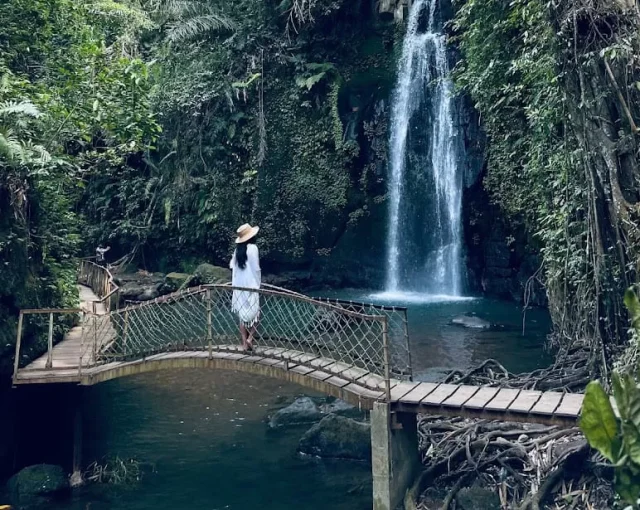
The areas of Ubud, Tegallalang, and Payangan in Gianyar Regency, Bali, remain favorite tourist destinations for both local and international visitors. However, other areas in Gianyar Regency, such as Kedisan Village, have significant tourism potential yet to be fully developed.
One of the key attractions in Kedisan Village is the Ulu Petanu Waterfall, which attracts approximately 6,000 local and international tourists each month.
Unfortunately, the local Village-Owned Enterprises (BUMDes) management has not been optimal due to a lack of human resources and inconsistent marketing strategies among different managers.
Concerning this situation, 30 students from UGM’s KKN Kembara Tegallalang program, spread across Kenderan and Kedisan Villages, created a website to promote tourism and local small businesses (UMKM) in these areas.
The use of digital media is believed to effectively boost the local economy by enhancing business visibility.
“The advantage of digital media is that it reduces promotional costs and is more effective than conventional methods like banners or billboards,” said Dr. Pande Made Kutanegara, the supervising lecturer, in an interview on Thursday (Aug. 22).
Dr. Kutanegara added that UGM is always ready to serve and explore all the villages in Gianyar Regency. UGM has collaborated with the Gianyar Regency government for over ten years to implement the university’s tri-dharma principles.
“UGM hopes that KKN students will continue to be welcomed and placed here so that the ongoing programs can continue in the coming years,” he said.
The students developed the website pesonakedisan.com to provide information about the village, tourist destinations, local businesses, and cultural heritage and serve as a digital library.
The Kembara Tegallalang team also provided a QR code for easy mobile phone access to the website. This unrestricted access, available anytime and anywhere, effectively promotes Kedisan Village’s tourism sector.
Dewa Ketut Raka, the Head of Kedisan Village, expressed his gratitude for the work of the KKN Kembara Tegallalang students, noting that the website has made it easier for the village to promote its natural and cultural attractions through digital media.
“We can now easily showcase all our potential online, making it more attractive to potential tourists,” Raka said.
In addition to developing the website, the KKN Kembara Tegallalang students, who were divided into four clusters—health, science and technology, agriculture, and social sciences and humanities—conducted other programs over 50 days in collaboration with local farmers, youth organizations, and school children, integrating themselves into the village community.
Author: Triya Andriyani
Photo: Googlemap@indahwindiasari

